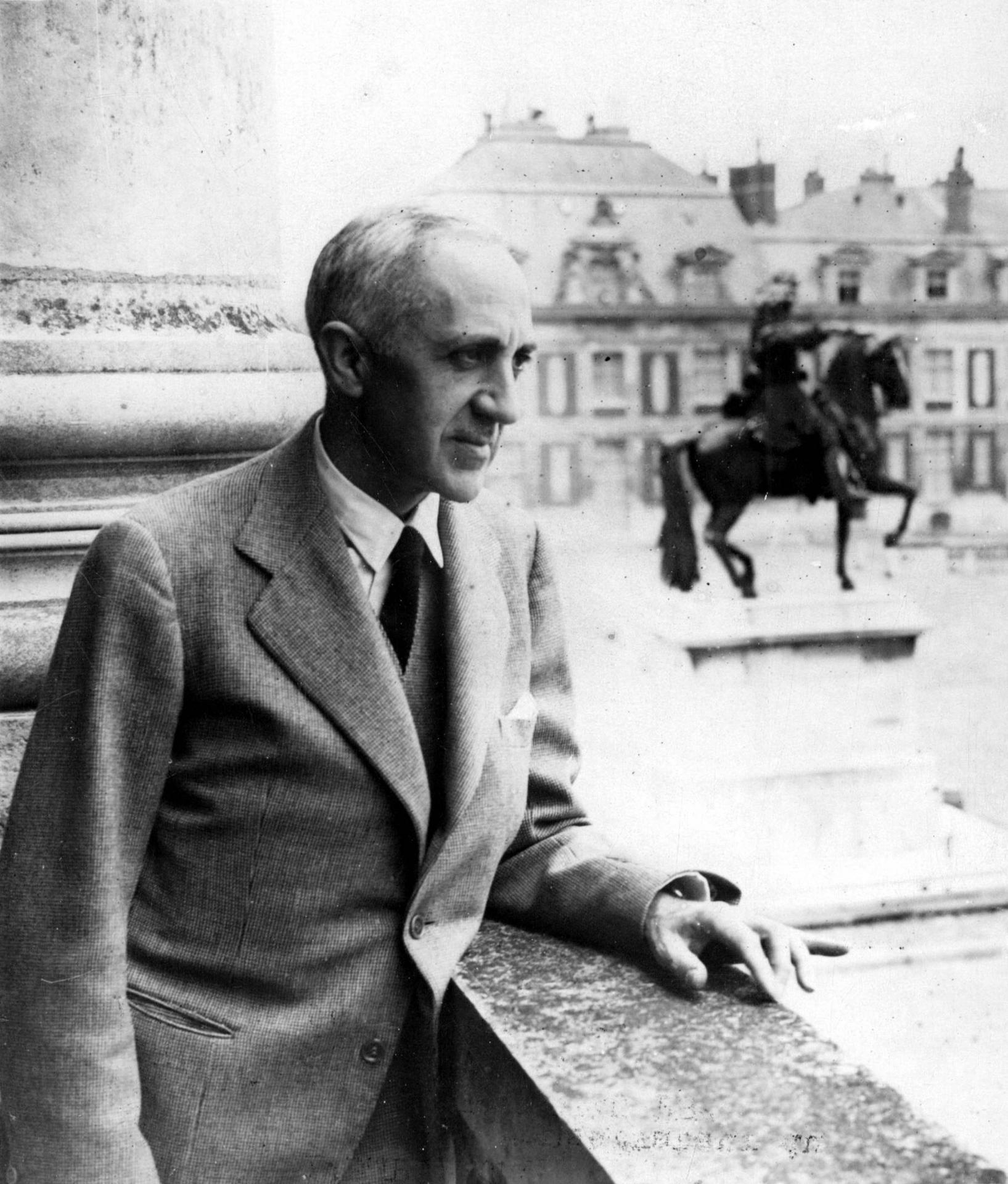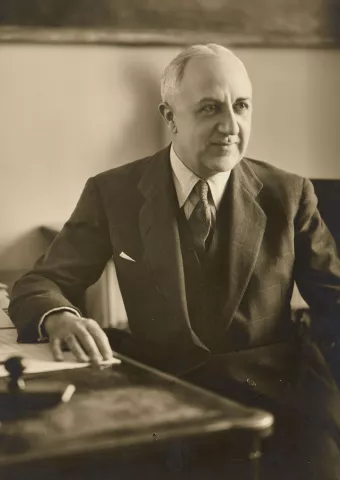Under the tutelage of Pierre de Nolhac, Head Curator of the Palace of Versailles, Charles Mauricheau-Beaupré became a conservation officer at the museum in 1919. An alumnus and later professor at the Ecole du Louvre, he established a reputation as one of the leading specialists on the art of Versailles.
After de Nolhac’s retirement, Charles Mauricheau-Beaupré continued to work alongside his successors: André Pératé (1920-1932), Gaston Brière (1932-1938) and Pierre Ladoué (1938-1941). Having served as deputy curator since 1924, it was not until 1941, in the dark days of the war, that he ascended to the top job, following the departure of Pierre Ladoué.

Charles Mauricheau-Beaupré in 1949
© Private collection (photo © EPV/Christophe Fouin)
1930s
Shortly after the end of the First World War, France’s museums began thinking seriously about how best to protect their collections in the event of another conflict. The Palace of Versailles was in desperate need of a clear strategy in this regard. Head curator André Pératé felt that the value of the palace exceeded the worth of its collections, but the Museums Directorate tasked his deputy Charles Mauricheau-Beaupré with preparing plans for evacuating the artworks if necessary. In September 1933, in response to a request from Jacques Jaujard, Mauricheau-Beaupré submitted a twenty-page report to the ministry. The report covered the general measures to be taken to protect the museum staff, the evacuation policy for the museum’s artworks, the “dangers of evacuation and means of overcoming them,” logistical organisation etc.
The deputy curator thus recommended that the collections should be evacuated in two waves, corresponding to two distinct levels of priority: the first, most urgent evacuation would include 1,000 works of all kinds. The second category contained more bulky items, including 2,300 artworks in various formats. The report submitted by Mauricheau-Beaupré in 1933 was considered too ambitious by the national museums directorate.
In 1938, the Sudeten Crisis raised fears of an imminent conflict. France’s museums began hurriedly evacuating their collections. However, a lack of resources and preparation meant that the Palace of Versailles did not have time to remove any of its priceless artworks.
World War Two
As Europe stood on the verge of World War Two, Charles Mauricheau-Beaupré was still in post as deputy curator alongside head curator Pierre Ladoué. He was promoted to the post of curator in 1941, when Ladoué left Versailles. Working alongside architect-in-chief André Japy, Mauricheau-Beaupré oversaw the return of some of the museum’s collections, a measure demanded by the Germans soon after they took control of the palace. In the meantime, the new head curator took advantage of the palace’s evacuation to thoroughly reorganise the museum.
After the war
After the war, Charles Mauricheau-Beaupré retained his post as head curator of the Palace of Versailles. His ambition to re-establish a historical museum in the former royal residence inspired a wide-ranging programme of refurbishment and refurnishing, including an active acquisition policy for period furniture.
“The Museum of Versailles is not just for scholars and experts; above all, it should be a visual illustration of our history for our children and foreign visitors. Only then does the lesson come to life. Alongside the Hall of Mirrors, this museum of our national history must double as a sanctuary celebrating the greatness of our nation.”
Charles Mauricheau-Beaupré died in an accident in Canada in 1953, bringing to a premature end a 34-year career entirely devoted to serving the Palace of Versailles.

Charles Mauricheau-Beaupré
© Cegesoma





